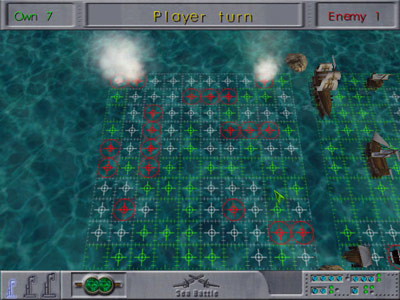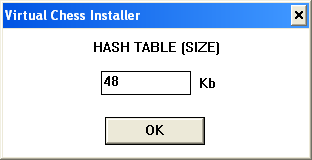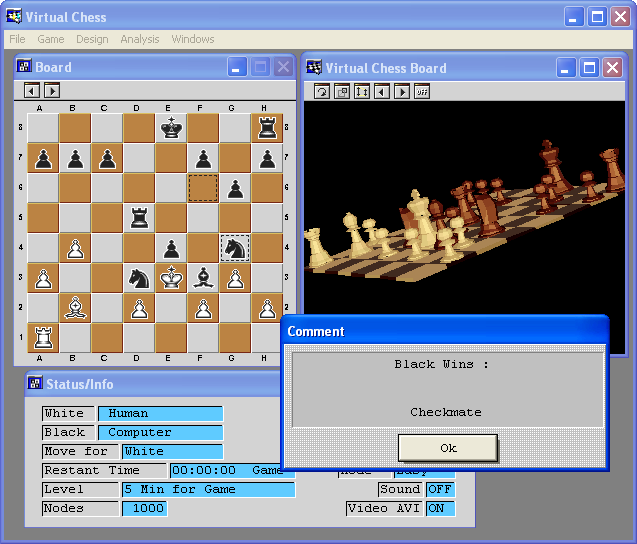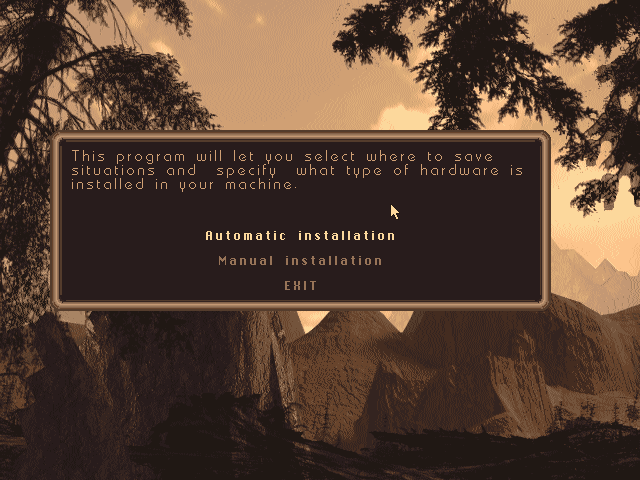I love patterns. I enjoy finding common properties of particular genres of media and entertainment. To that end, I adore humorous compilations of cliches. For example, the chess category of this classic movie cliches list mentions, “Great Chess players are always honored to play on some rich guy’s fancy Philipino Art Set. (In reality, better players are almost always adament about playing on a plain, unadorned wood or plastic ‘Staunton’ set. No red or blue pieces, no ceramic or metal, no elephants for rooks.)” Thanks to today’s game, Combat Chess, I think I finally understand why this is the case– because chess is supposed to require concentration on the part of a human player. Sore video game losers often accuse video games of ‘cheating’ by somehow manipulating data factors under the cover of the running program. This game’s cheating is more flagrant: It just assaults your audio and visual senses constantly. It’s hard enough for me to remember the basics of chess and to think one move ahead without this level of sensory onslaught.
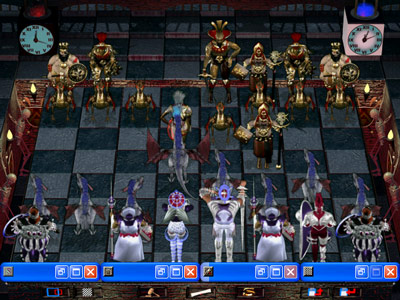
Combat Chess is easily the most X-treme variation of the timeless strategy game that I have personally experienced. As intimated above, I don’t necessarily consider that to be of benefit to a chess sim. The game’s intro kicks off with a splashy series of sharply rendered chess pieces slashing the guts out of each other before dropping the player into the above screen. Actually, the first game screen you see is not quite as pictured above. There are a whole bunch of windows open on the little 640×480 fullscreen canvas. One window shows the chess board with classic-style representations, another shows algebraic chess movement history, and there are 2 others whose functions escape me. The UI is, frankly, a mess. Fortunately, the windows can all be minimized as you can see in the screenshot, which still shapes up to be a distraction.
So it’s a basic chess game, only with gorgeously animated (by 1997 standards) characters who make a big production out of moving from square to square. Special notice goes to the knights who, despite their full armor, can perform a somersault from a standing position to their target squares. The characters make an even bigger deal out of knocking down a piece from the opposing side. For the squeamish, the game does allow you to configure for no gore. The above screenshot appears to have one of my dragon-pawns facing off against the computer’s mohawked, spike-bra-clad, punk dominatrix queen. It’s not pretty, not on any level.
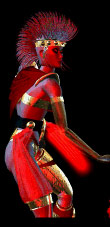
The game can be viewed from any of 4 angles. The above screenshot is the south view. North, east, and west are also available. I think that perhaps a diagonal/isometric view would have been useful as none of the conventional views made it easy to see all of the overlapping pieces. Combat Chess offers networked human-human play and also has a mode for letting the computer play against itself. I did this when I got tired of trying to focus and just wanted to see if the computer could come up with anymore interesting animations. This is when another obnoxious characteristic of the game hit home in a big way: The UI seems to block whenever the computer is contemplating its next move. This can be problematic when the computer is playing against itself and you want to monkey with the assorted menus. There’s a little-known programming technique called multithreading– learn it!
One final nuisance that the game employs to divert your attention from the task at hand: The soundtrack. It consists of a neverending combination of drum beats, wind noises, and the occasional screaming, or creaky door, or other ambient sounds one might hear in a nominal medieval dungeon. Fortunately, all of these sounds are configurable via this dialog:
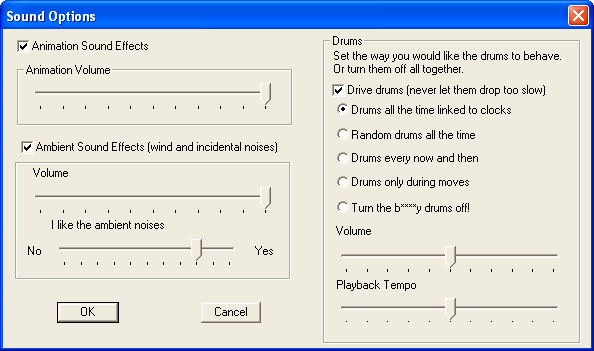
Until I saw the above dialog, I never knew that the word “bloody” could be considered inappropriate. This is actually my first clue that perhaps this game was not developed for the U.S. market. The disc is somewhat mysterious– I received it in a lot of 50 CD-ROMs I got off eBay and it was a plain CD-ROM that basically just had the words “Combat Chess” and “ValueSoft” (http://www.valuesoft.net/, which I believe may now be an unrelated company, or one that shifted focus).
To dig into the technical details, all of the animations are stored in a file format with the extension .seq. It’s interesting to note that the installer gives you 3 installation size options– small (~5 MB), medium (~25 MB), or large (~125 MB). Maybe it’s just coincidence that those quantities are 51, 52, and 53 MB, respectively. But, hey, some of us are always on the lookout for whatever patterns we can find.
